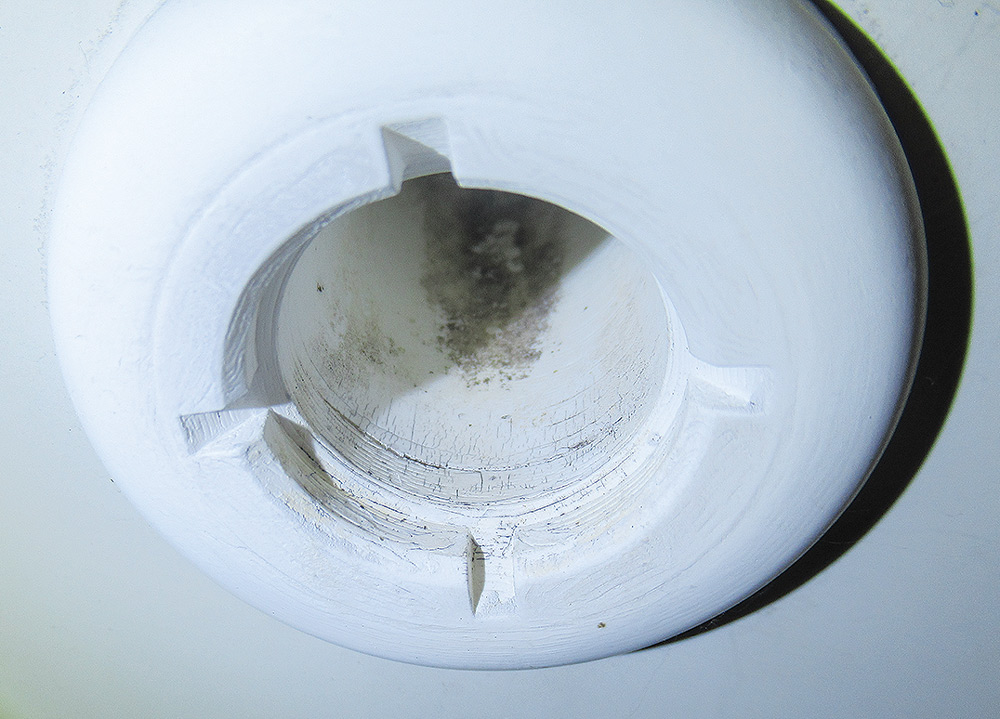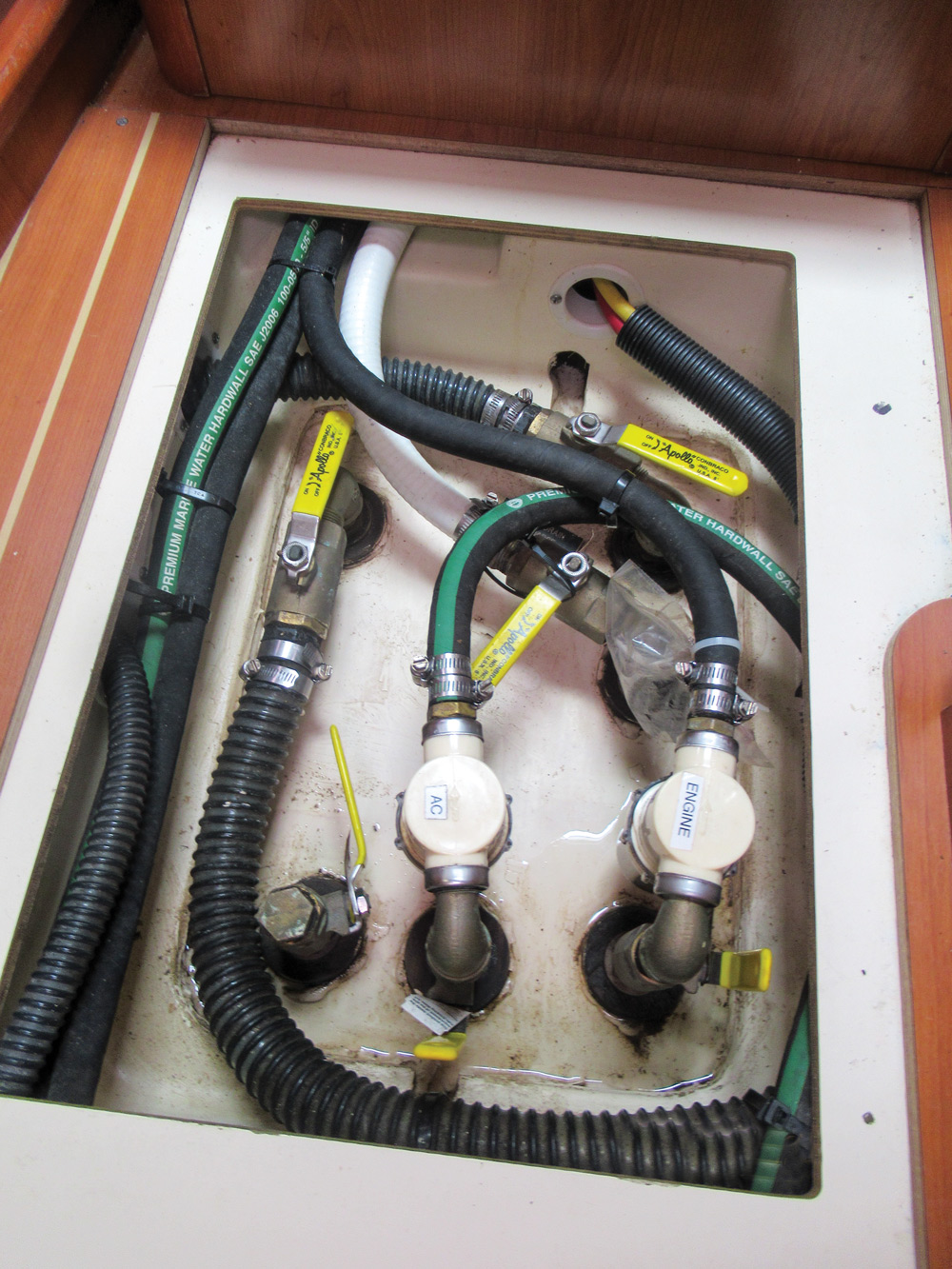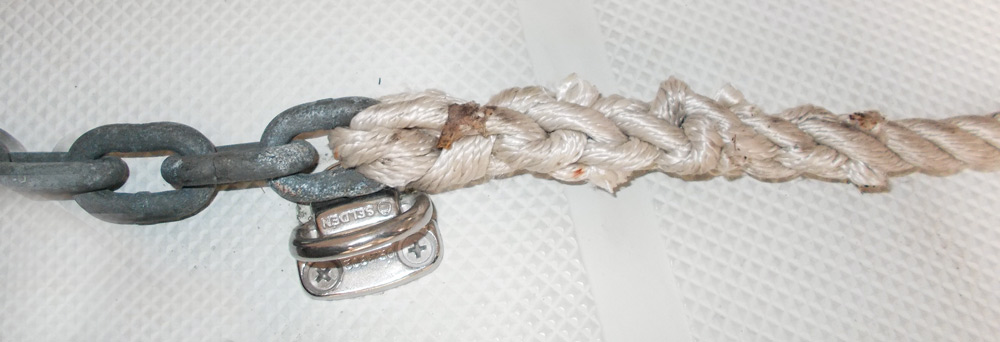The Danger of Deferred Maintenance
Fixing little problems at fitting out time can prevent dangerous and expensive issue laters
Examine through-hull fittings
Nylon, above-the-waterline fittings commonly found on cockpit drains and bilge pump outlets are very susceptible to UV damage, and they can dry out and crack. The dark, horizontal lines are cracks evident in this picture show such damage, which is quite common, according to surveyors. These cracks can create leaks from wave action.
The good news is that these fittings aren’t difficult or expensive to replace. Replacing them with metal fittings such as bronze or stainless should ensure that the problem never happens again, buying a boat owner peace of mind and one less source of future damage.

Check seacocks and hose clamps
Part of any fitting out checklist should be making sure the things that can cause a serious problem quickly are double-checked. Both seacocks and hose clamps fall in this category. Get into the bilge and make sure that seacocks move easily and are not rusted, something surveyors told us they frequently find. They should move smoothly without sticking.
Hose clamps have the opposite problem. If they let go you can have a lot of water in the boat very quickly. These hose clamps are part stainless steel, but the threaded portion is made of marginal steel and is not appropriate for marine use. Such clamps can rust quickly and fail. Any rusted hose clamps should be replaced with truly stainless clamps appropriate for marine applications.

Look over anchoring gear
A poor or frayed chain splice on anchoring gear is a commonly found problem in surveys, another item on a fitting out list that is not difficult but pays big dividends when it is paid attention to. Splices should show no signs of fraying or loosening and no signs of rot. Anything else should be put on the work list to be attended to before there’s any chance of needing the anchor.


Comments